General description
DNA helicase MCM9 (EC 3.6.4.12; UniProt Q9NXL9; also known as hMCM9, Mini-chromosome maintenance deficient domain-containing protein 1) is encoded by the MCM9 (also known as C6orf61, MCMDC1, ODG4) gene (Gene ID 254394) in human. Mammalian minichromosome maintenance (MCM) protein homologues MCM8 and MCM9 play important roles in DNA replication elongation and prereplication complex (pre-RC) formation. MCM9 is found physically interacted with MCM8 and the interaction is essential for MCM9 cellular stability. MCM8-MCM9 complex is required for homologous recombination- (HR-) mediated repair of double-strand breaks (DSBs). In addition, the ATPase motifs of MCM8 and MCM9 (a.a. 523-530) are needed for MRN (MRE11-RAD50-NBS1) complex recruitment to DSBs sites. Cancer cells with MCM9 homozygous deletion display enhanced reduction in cell survival following exposure to interstrand-crosslinking (ICL) agents, such as cisplatin, due to impaired HR efficiency.
Specificity
This rabbit polyclonal antiserum detected DNA damage-induced MCM9 nuclear foci formation in U2OS and wild-type, but not Mcm9-null MEFs (Park, J., et al. (2013). Mol. Cell. Biol. 33(8):1632-1644). The C-terminal end epitope region is present in all four human MCM9 spliced isoforms and the first two mouse MCM9 isoforms reported by UniProt (Q9NXL9 and Q2KHI9).
Immunogen
Epitope: C-terminus
Recombinant human MCM9 C-terminal fragment.
Application
Anti-MCM9, Cat. No. ABE2603, is a highly specific rabbit polyclonal antibody that targets DNA helicase MCM9 and has been tested in Chromatin Immunoprecipitation (ChIP), Immunocytochemistry, Immunoprecipitation, and Western Blotting.
Chromatin Immunoprecipitation (ChIP) Analysis: A representative lot detected a time-dependent MCM9 recruitment to the integrated I-scel cleavage site in a RAD51-independent manner in HeLa DR13-9 cells following I-scel transfection (Park, J., et al. (2013). Mol. Cell. Biol. 33(8):1632-1644).
Chromatin Immunoprecipitation (ChIP) Analysis: A representative lot detected a time-dependent MCM9 recruitment to the intrastrand cross-link (ICL) site of the pICL plasmid in xenopus egg extract followng induction of replication-dependent repair (Park, J., et al. (2013). Mol. Cell. Biol. 33(8):1632-1644).
Immunocytochemistry Analysis: A representative lot detected DNA damage-induced MCM9 nuclear foci formation co-colocalized with RPA immunoreactivity by fluorescent immunocytochemistry staining of 0.5% Triton X-100-permeabilized, 4% paraformaldehyde-fixed human U2OS and mouse embryonic fibroblasts (MEFs) following cisplatin treatment. No target staining was seen in Mcm9-null MEFs (Park, J., et al. (2013). Mol. Cell. Biol. 33(8):1632-1644).
Immunoprecipitation Analysis: A representative lot co-immunoprecipiated MRN (MRE11-RAD50-NBS1) complex with MCM9 from U2OS and HEK293T cells (Lee, K.Y., et al. (2015). Nat. Commun. 6:7744).
Immunoprecipitation Analysis: A representative lot co-immunoprecipiated MCM8 and RAD51 with MCM9 from U2OS and HEK293T nuclear extracts. The antiserum also immunodepleted MCM9 in xenopus egg extract (Park, J., et al. (2013). Mol. Cell. Biol. 33(8):1632-1644).
Western Blotting Analysis: A representative lot detected MCM9 downreguation in prostate cancer cells and NCI-H1299, but not NCI-H2291, non-small cell lung cancer (NSCLC) cells fig1, 2, S1 (Lee, K.Y., et al. (2015). Nat. Commun. 6:7744).
Western Blotting Analysis: Representative lots detected MCM9 in U2OS cells. Transfecting cells with shRNA targeting either MCM8 or MCM9 downregulated cellular MCM9 level (Lee, K.Y., et al. (2015). Nat. Commun. 6:7744; Park, J., et al. (2013). Mol. Cell. Biol. 33(8):1632-1644).
Research Category
Epigenetics & Nuclear Function
Quality
Evaluated by Western Blotting in HEK293 cell lysate.
Western Blotting Analysis: A 1:500 dilution of this polyclonal antiserum detected MCM9 in 10 µg of HEK293 cell lysate.
Target description
~130 kDa observed. 127.3/72.74/43.98/84.44 kDa (human isoform 1/2/3/4), 125.8/142.4 kDa (mouse isoform 1/2), 126.6 kDa (xenopus) calculated. Uncharacterized band(s) may appear in some lysates.
Physical form
Rabbit polyclonal antibody serum with 0.05% sodium azide.
Unpurified
Storage and Stability
Stable for 1 year at -20°C from date of receipt.
Handling Recommendations: Upon receipt and prior to removing the cap, centrifuge the vial and gently mix the solution. Aliquot into microcentrifuge tubes and store at -20°C. Avoid repeated freeze/thaw cycles, which may damage IgG and affect product performance.
Other Notes
Concentration: Please refer to lot specific datasheet.
Disclaimer
Unless otherwise stated in our catalog or other company documentation accompanying the product(s), our products are intended for research use only and are not to be used for any other purpose, which includes but is not limited to, unauthorized commercial uses, in vitro diagnostic uses, ex vivo or in vivo therapeutic uses or any type of consumption or application to humans or animals.
biological source: rabbit. Quality Level: 100. antibody form: serum. antibody product type: primary antibodies. clone: polyclonal. species reactivity: human, mouse, Xenopus. technique(s): ChIP: suitable, immunocytochemistry: suitable, immunoprecipitation (IP): suitable, western blot: suitable. NCBI accession no.: NP_060166. UniProt accession no.: Q9NXL9. shipped in: ambient. target post-translational modification: unmodified. Gene Information: human ... MCM9(254394). Storage Class Code: 12 - Non Combustible Liquids. WGK: WGK 1. Flash Point(F): Not applicable. Flash Point(C): Not applicable.- UPC:
- 41116126
- Condition:
- New
- Weight:
- 1.00 Ounces
- HazmatClass:
- No
- WeightUOM:
- LB
- MPN:
- ABE2603












